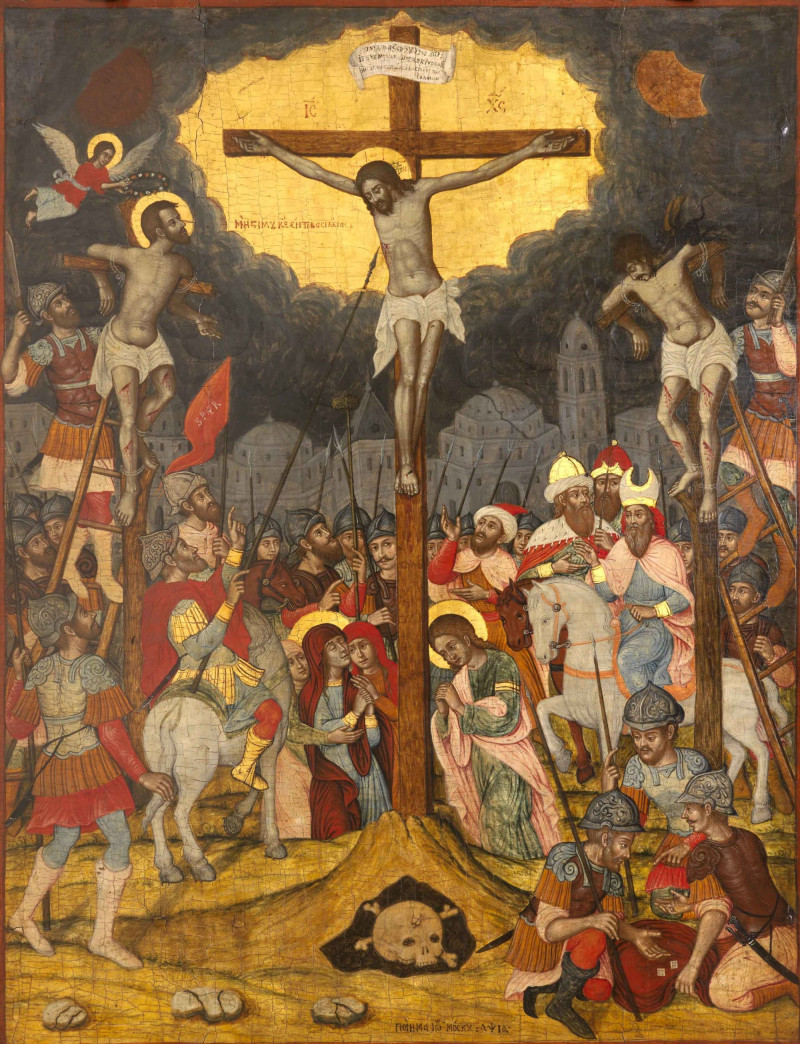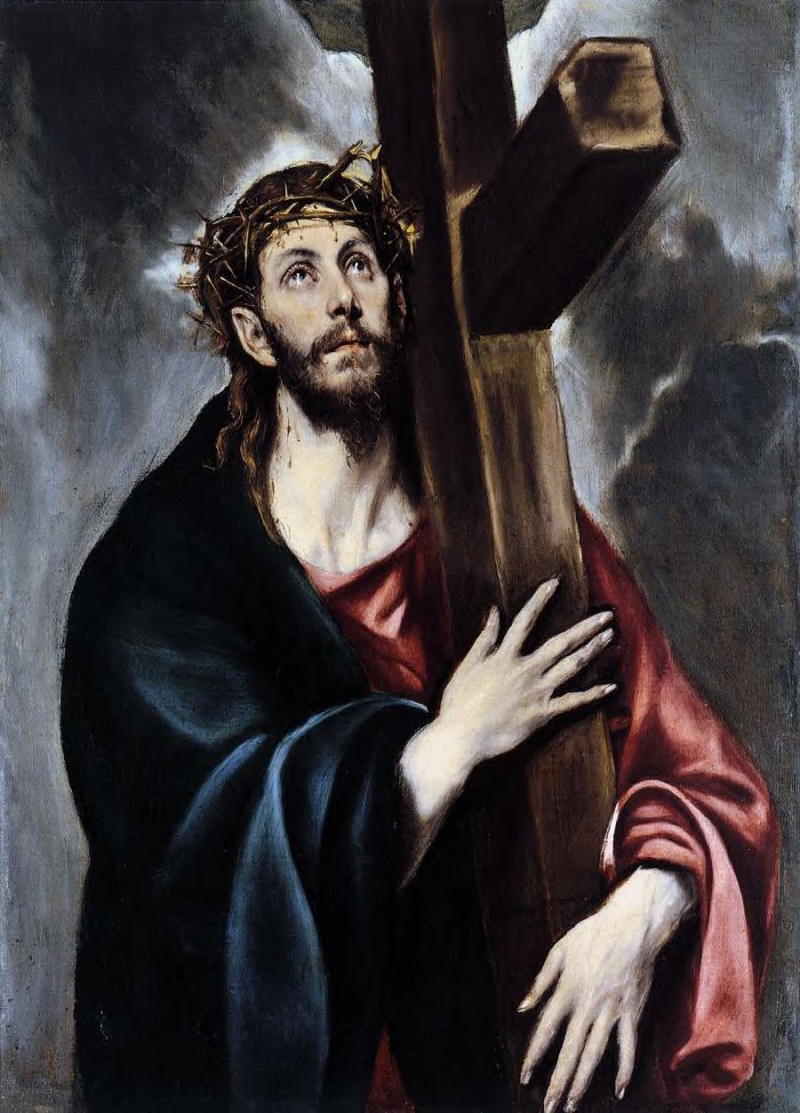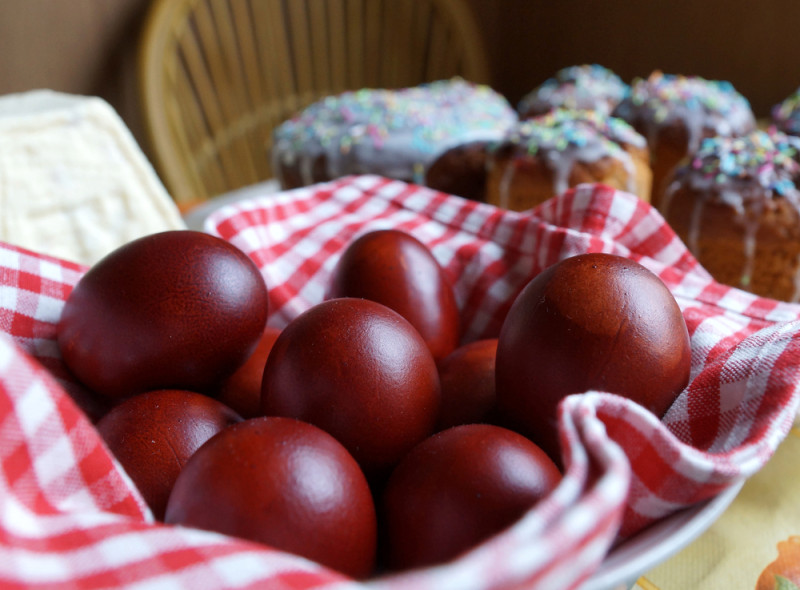At we will give the “stamp” of the day for the entire Holy Week until Easter Sunday
By Marina Zioziou
Holy Week it is something unique in the church year. In the importance, after all, of world-saving events, according to the saint John the Chrysostom, due to the name of the most holy week of the year as “Great”.
In the liturgical act of the Church, the beginning of the next day is made from the afternoon of the previous one. So, the Masses held on the evening of Holy Week, concern the events of the following day. Our texts, following this practice, will describe the next day’s events, but will be in the Sequence of the day they are published.
Every day on –with the help of Archimandrite Fr Filoumenos Roubis, Secretary General of the Holy Archdiocese of Athens– we will give the “stamp” of the day for the entire Holy Week until Easter Sunday. Also, Mrs. Evelena Kardamila, PhD candidate in Folklore will “travel” us to customs and traditions in every corner of Greece, which have their roots deep in time.
The morning of Maundy Thursday Vespers is celebrated with its Divine Liturgy attached Vassiliou the Greatduring which it is customary for most Christians to receive communion.
In the Ecumenical Patriarchate, every ten years or so the “baking”, i.e. the preparation, of Holy Myrrh takes place, which is then sent to the local Orthodox Churches. Myrrh is the result of mixing oil and other aromatic oils, drugs and medicinal plants. Used during the Sacrament of Anointing, which is held after baptism, at the opening of Temples and elsewhere. The process begins on Palm Sunday. In the chapel of Agios Andreas on Maundy Thursday in the morning, Orthros takes place and immediately after litany in the courtyard of the Patriarchate. The Holy Myrrh is carried there by 24 Archimandrites, who hold 24 silver vessels, with the last being the Patriarch, who holds a small Myrrh Box. The litany is attended by representatives of the Greek state and diplomats. Before the Holy Myrrh is transferred to the large containers of the Myrosophile (in the tower of the Patriarchate), a Divine Liturgy is held, where it is consecrated.
Maundy Thursday afternoon – Good Friday Orthrus
In the afternoon of Maundy Thursday, the “Service of the Passion” or, as the world fondly knows it, the “Service of the Twelve Gospels” takes place. After the reading of the fifth Gospel in sequence, as explained to us by Archimandrite Fr Filoumenos Roubisin the dark and with a few lighted candles, the Crucified One comes out of the Sanctuary, and is placed in a procession in the middle of the Temple, as the following is chanted: “Today he hangs on a tree”. It will remain there until Vespers the next day, Good Friday morning.
The events of the day: After the Last Supper, Christ led the Disciples out of the city, into a deep ravine known as the “Valley of Cedars” and up to the “Mount of Olives,” opposite Jerusalem, where He and His Disciples usually spent the night.
The Sanhedrin of the Jews hastened their decision to put Jesus to death before the Passover, because they feared a riot of the multitude, which had gathered in the city because of the feast. They could not arrest Him in a public place, because He was followed by a multitude of people, who would riot. Judas, then, was extremely useful to the Jewish authorities, because he knew exactly where to find Christ and the Disciples, away from the crowd. He knew that they used to spend the night at “Gesthimani”, an isolated olive mill in the “Mountains of Olives”. The moment was right—past midnight—and certainly, because of the time, not many defenders of Christ would be present.
When the Disciples and Christ arrived at the “Mount of Olives”, the Lord took him with Him Peter, James and John and they went a little further, from the place where the other Disciples were sleeping. “Sorrowful unto death is my soul” told them. “Wait here and stay awake with me”. After going a little way, he fell on his face to the ground and prayed with these words: “Father, if it be possible, let me not drink this cup; yet not my will, but thine, be done.”. He was in great tension. The magnitude of His agony is described in detail by the Evangelist Luke, who writes: “Then an angel from heaven appeared to Him and strengthened Him. Anguish overwhelmed Him and He prayed for a long time. His sweat became like drops of blood and fell to the ground.”
He prayed anxiously for about three hours in obedience to His Father’s will. He was completely exhausted, but the night was just beginning. Already in the distance he heard the muffled sound of the crowd, approaching the olive grove. Christ, of course, knew why Judas was there. He then walked towards the crowd and asked: “Who are you after?”. “Jesus of Nazareth”They answered him. “I am” He answered, and at His answer they recoiled and fell. The Fathers of the Church interpret that this happened because they felt the immensity of His divine power.
Meanwhile the soldiers had led Jesus to Annas, Caiaphas’ father-in-law for questioning. For the Jews, the Great High Priest was authorized by God to offer sacrifices for the sins of the people and had as an indelible characteristic lifelong holiness. Anyone who had served as High High Priest for even one day held the title and enjoyed considerable power throughout his life. The office gave him an imposing cult status, which set him above the others. And since no Jewish king ruled the province of Judea for most of 1 AD. century, the Great High Priest had the title of Patriarch, that is, he represented the Jewish people in religious matters before God, but also in all political matters with Rome. The rest is known…
Pilate held the title “Friend of Caesar”. This title was given to the distinguished men of Rome. According to historians, he held this title with the help of a friend of his, a very important Roman, influential with Caesar, named Lucius Aelius Siianos. Nevertheless Caesar Tiberius he had recently removed Siianos, on the charge of treason, and executed him. This fact was known to Caiaphas and the Chief Priests, and they used it effectively to force Pilate to execute Jesus, under the threat of presenting him to Caesar as a traitor.
When Pilate heard these words, he ordered Jesus to be brought out, and he himself sat on the judge’s seat, in the place called “Stone-paved”, in Hebrew “Gavatha”. It was almost noon on the eve of the Jewish Passover, noon for us on Good Friday.
The sight was horrible. Christ was standing in a pool of blood. The crown of thorns protruded around His head, piercing it. With his purple robe bloodied, clinging to His wounds, He was a sight of macabre travesty of royal glory. Pilate was furious with the Jews, because they had essentially humiliated him with their threats. So he said to them: “Behold, your king!” Then they began to shout with shouts: “Death, death, crucify Him”. With sarcasm and contempt he answered them: “Shall I crucify your king?”. And they answered: “We have no other king but the emperor.”
The frenzied crowd became uncontrollable. If Pilate had not quickly yielded to the demands of the impassioned mob, some commotion would probably have ensued. He did what he could, but his main responsibility was to maintain order and his main concern was to preserve his life and position. So he washed his hands saying: “I am innocent of the blood of this righteous man; pity on you”. Thus, he expressed symbolically, that he does not agree with the death penalty. Then all the people answered and said: “His blood upon us and upon our children.” Pilate then sat on the judge’s seat to sentence Jesus to death. It was the sixth hour of the day, that is, about twelve noon. The plan of salvation would soon culminate in the perfect sacrifice of the lamb of God.
The customs of our country
On Maundy Thursday not only do the Lord’s Passions culminatebut also marks the beginning of Easter customs in traditional and modern society, as pointed out by Mrs. Evelena Kardamila. The customs of this day concern the household and the preparations for the celebration of the Resurrection, but also the Passion Procession with the Crucifixion of Christ in the afternoon in the church.
First, on Maundy Thursday, the women start kneading Lambri’s bun in the morning. It is fermented with herbs and decorated with nuts. We meet it under various names, depending on the area we are referring to. Some of them are koutsuna, coffin, basket, egg, etc. So much power did this preparation have in popular belief, that in many areas such as Eastern Rumilia used this dough to make small crosses, place them on the iconostasis and when someone was sick they gave him a small piece to be cured.
Of course, the most popular custom of Maundy Thursday in all regions of Greece is the painting of eggs. In fact, the day is named after their red color Red Drop or Red Drop. Of course there is specific etiquette for dyeing eggs and this includes the number of eggs to be dyed, the medium of dyeing, but also the container in which the eggs will be placed after dyeing. Special and healing properties are given to the first egg to be dyed, but also to the evangelized eggs, that is, those that are sent to the church to be officiated.
The color of the eggs is mainly red and there are various explanations for this choice. For some, the color red is preferred in memory of the shed blood of Christ. For others, red is a festive color that suits the great joy of the Resurrection. Finally, paccording to a tradition from Kastoria, when Christ rose, a village woman found it hard to believe and told her fellow villagers that if this really happened, the eggs in front of her should turn red. So it happened. That’s why we’ve been dyeing eggs red ever since.
However, despite the household chores, the faithful do not forget their religious practices on this day. On the night of Maundy Thursday after the reading of the Twelve Gospels and the Crucifixion of Christ, many women and girls stay up all night in the church to honor and mourn Christ, as they would for a dead relative of theirs. It is the night when, in an atmosphere of excitement and emotion, they sing:
“Black sky today, black day today
today everyone is sad and the mountains are sad.
Today the lawless Jews held a council,
the lawless and the dogs and the damned,
to crucify Christ, the king of all”
At the same time, on the night of Maundy Thursday, the women who spend the night in the church decorate the Epitaph, in which the body of Christ will be placed the day after the Decapitation ceremony. The decoration is made with flowers brought by the faithful. Lemon blossoms, roses, violets and marigolds are woven into wreaths and garlands, so that the Epitaph resembles a flower crown.
Finally, the sacredness of the Maundy Thursday service is also given to the objects of worship for the faithful. A typical example is the candles that burn during the reading of the Twelve Gospels. Leaving the church that night the faithful take a piece of these candles and keep it all year as a talisman.
Source: Skai
I have worked as a journalist for over 10 years, and my work has been featured on many different news websites. I am also an author, and my work has been published in several books. I specialize in opinion writing, and I often write about current events and controversial topics. I am a very well-rounded writer, and I have a lot of experience in different areas of journalism. I am a very hard worker, and I am always willing to put in the extra effort to get the job done.













